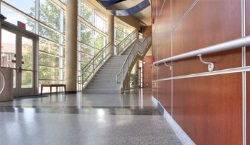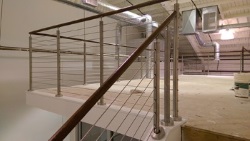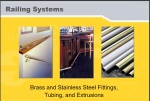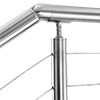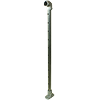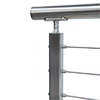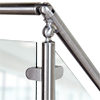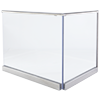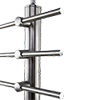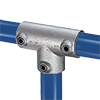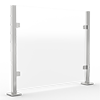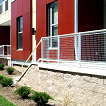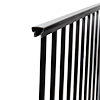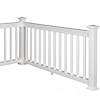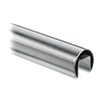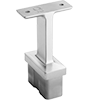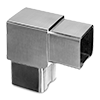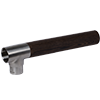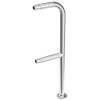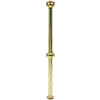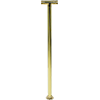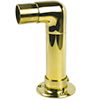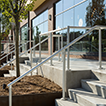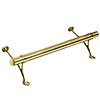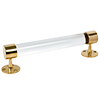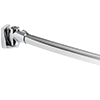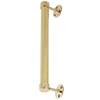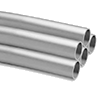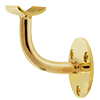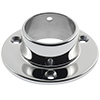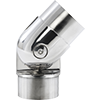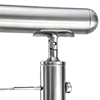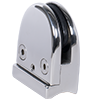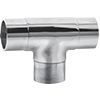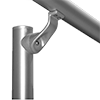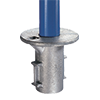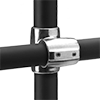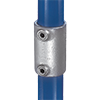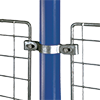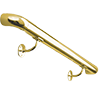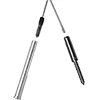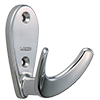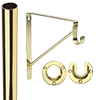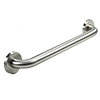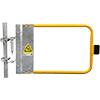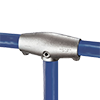Handrail Accessibility Standards ADA July 2004
CHAPTER 5: GENERAL SITE AND BUILDING ELEMENTS
504 Stairways
504.1 General. Stairs required to be accessible shall comply with 504.
Advisory 504.1
Although these requirements do not mandate handrails on stairs that are not part of a means of egress, State or local building codes may require handrails.
504.2 Treads and Risers. All steps on a flight of stairs shall have uniform riser heights and uniform tread depths. Risers shall be 4 inches (100 mm) minimum in height and 7 inches (180 mm) maximum in height. Treads shall be 11 inches (280 mm) minimum in depth, measured from riser to riser. 
504.3 Open Risers. Open risers are not permitted.
504.4 Tread Surface. Stair treads shall comply with 302. Changes in level are not permitted.
EXCEPTION:
Treads shall be permitted to have a slope not steeper than 1:48.
504.5 Nosings. The radius of curvature at the leading edge of the tread shall be 1/2 inch (13 mm) maximum. Nosings that project beyond vertical risers shall have the underside of the leading edge curved or beveled. If not vertical, risers shall slope under the tread at an angle of 30 degrees maximum from vertical; however, the permitted projection of the nosing shall be 1-1/2 inches (38 mm) maximum beyond the rear of the tread below. 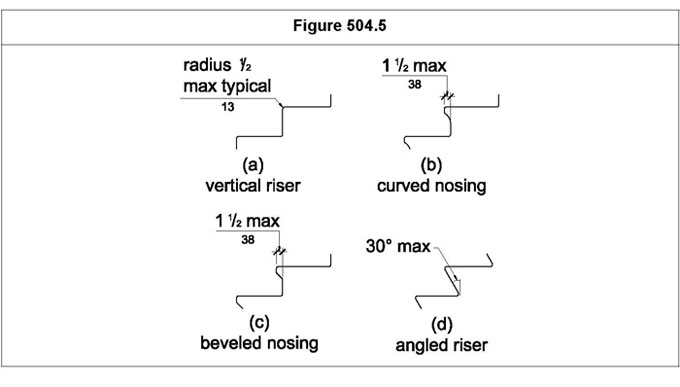
504.6 Handrails. Stairs shall have handrails complying with 505.
504.7 Wet Conditions. Landings subject to wet conditions shall be designed to prevent the accumulation of water.
505 Handrails
505.1 General. Handrails required by 405 at ramps or 504 at stairs shall comply with 505.
505.2 Where Required. Handrails shall be provided on both sides of stairs and ramps.
EXCEPTIONS:
1. Handrails are not required on both sides of aisle stairs and aisle ramps provided with a handrail at either side or within the aisle width.
2. Handrails are not required on ramps with a rise of 6 inches (150 mm) maximum.
505.3 Continuity. Handrails shall be continuous within the full length of each stair flight or ramp run.
EXCEPTION:
Handrails are not required to be continuous in aisles serving seating.
505.4 Height. Top of gripping surfaces of handrails shall be 34 inches (865 mm) minimum and 38 inches (965 mm) maximum vertically above stair nosings and ramp surfaces. Handrails shall be at a consistent height above stair nosings and ramp surfaces. 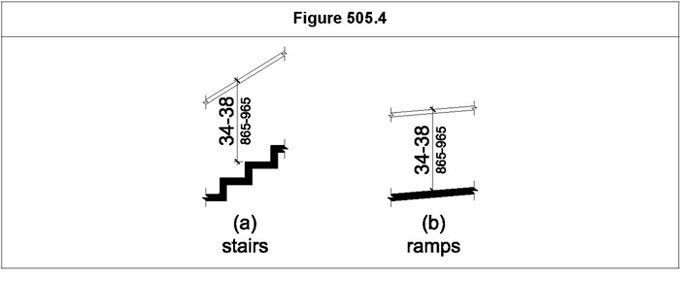
Advisory 505.4
The requirements for stair and ramp handrails in this document are for adults. When children are the principle users in a building or facility (e.g., elementary schools), a second set of handrails at an appropriate height can assist them and aid in preventing accidents. A maximum height of 28 inches (710 mm) measured to the top of the gripping surface from the ramp surface or stair nosing is recommended for handrails designed for children. Sufficient vertical clearance between upper and lower handrails, 9 inches (230 mm) minimum, should be provided to help prevent entrapment.
505.5 Clearance. Clearance between handrail and wall shall be 1-1/2 inches (38 mm) minimum. 
505.6 Gripping Surface. Gripping surfaces shall be continuous, without interruption by newel posts, other construction elements, or obstructions.
EXCEPTION:
Handrail brackets or balusters attached to the bottom surface of the handrail shall not be considered obstructions provided they comply with the following:
- not more than 20 percent of the handrail length is obstructed
- horizontal projections beyond the sides of the handrail occur 2-1/2 inches (64 mm) minimum below the bottom of the handrail; and
 Exception
Exception
- edges have a 1/8 inch (3.2 mm) minimum radius.
505.7 Cross Section. Handrails shall have a circular cross section with an outside diameter of 1-1/4 inches (32 mm) minimum and 2 inches (51 mm) maximum, or shall provide equivalent graspability in accordance with 505.7.1. 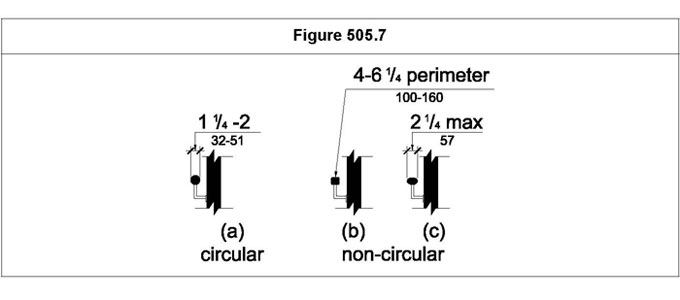
505.7.1 Non-Circular Cross Sections. Non-circular cross sections shall have a perimeter dimension of 4 inches (100 mm) minimum and 6-1/4 inches (160 mm) maximum, and a cross-section dimension of 2-1/4 inches (57 mm) maximum.
505.8 Surfaces. Handrails and any wall or other surfaces adjacent to them shall be free of any sharp or abrasive elements. Edges shall have a 1/8 inch (3.2 mm) minimum radius.
505.9 Fittings. Handrails shall not rotate within their fittings.
505.10 Handrail Extensions. Handrails shall extend beyond stair runs and ramp runs in accordance with 505.10.
EXCEPTIONS:
1. Extensions are not required for continuous handrails at the inside turn of
switchback or dogleg stairs and ramps.
- Extensions are not required for handrails in aisles serving seating where the handrails are necessarily discontinuous to provide access to seating and to permit crossovers within the aisle.
- In alterations, full extensions of handrails shall not be required where such extensions would be hazardous or impossible due to plan configuration.
505.10.1 Top and Bottom Extension at Ramps. Ramp handrails shall extend horizontally above the landing for 12 inches (305 mm) minimum beyond the top and bottom of ramp runs. Such extension shall return to a wall, guard, or the walking surface, or shall be continuous to the handrail of an adjacent ramp run. 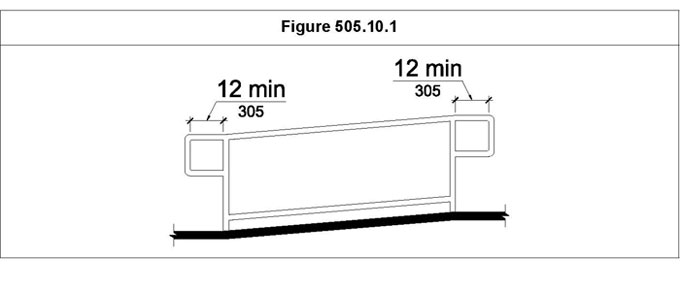
505.10.2 Top Extension at Stairs. At the top of a stair flight, handrails shall extend horizontally above the landing for 12 inches (305 mm) minimum beginning directly above the first riser nosing.
Such extension shall return to a wall, guard, or the walking surface, or shall be continuous to the handrail of an adjacent stair flight. 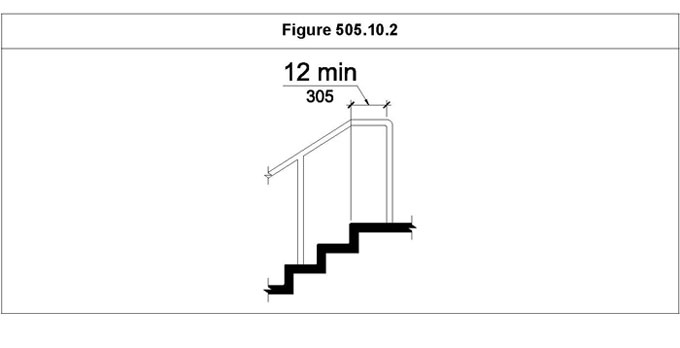
505.10.3 Bottom Extension at Stairs. At the bottom of a stair flight, handrails shall extend at the slope of the stair flight for a horizontal distance equal to one tread depth beyond the last riser nosing and an additional 12 inches (305 mm) minimum horizontally at a height equal to that of the sloping portion of the handrail as measured above the stair nosings. Such extension shall return to a wall, guard, or the walking surface, or shall be continuous to the handrail of an adjacent stair flight. 
- General site and building elements required to be accessible by Chapter 2 Scope shall comply with the applicable provisions of this chapter.
- Floor or Ground Surfaces. Parking spaces and access aisles serving them shall comply with
302. Changes in level are not permitted. Access aisles shall be at the same level as the parking spaces they serve.
Advisory 502.4
Access aisles are required to be level in all directions to provide a level surface for wheelchair transfer to and from vehicles.
EXCEPTION: Slopes not steeper than 1:48 shall be permitted.
502.5 Vertical Clearance. Van parking spaces, access aisles serving them, and a vehicular route from an entrance to van parking spaces and from van parking spaces to an exit shall provide a vertical clearance of 98 inches (2490 mm) minimum.
502.6 Identification. Where accessible parking spaces are required to be identified by signs, the signs shall include the International Symbol of Accessibility complying with 703.7. Such signs shall be 60 inches (1525 mm) minimum above the floor or ground surface measured to the bottom of the sign.
503 Passenger Loading Zones
503.1 General. Passenger loading zones required to be accessible shall comply with 503.
503.2 Vehicle Pull-up Space. Passenger loading zones shall provide a vehicular pull-up space 96 inches (2440 mm) minimum in width, 20 feet (6100 mm) minimum in length and an adjacent access aisle complying with 503.3.
503.3 Access Aisle. Access aisles serving passenger loading zones shall comply with 503.3. Access aisles shall adjoin an accessible route. 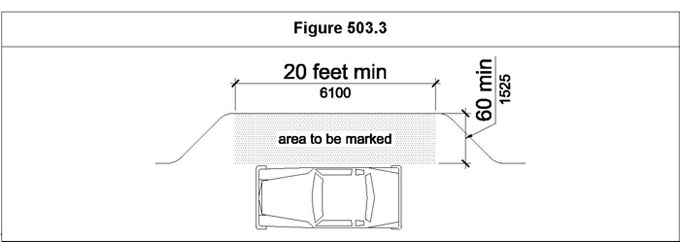
503.3.1 Width. Access aisles serving vehicle pull-up spaces shall be 60 inches (1525 mm) wide minimum.
503.3.2 Length. Access aisles shall be 20 feet (6100 mm) minimum in length and shall extend the full length of the vehicle pull-up spaces they serve.
503.3.3 Marking. Access aisles shall be marked so as to discourage parking in them.
503.4 Floor and Ground Surfaces. Vehicle pull-up spaces and access aisles serving them shall comply with 302. Changes in level are not permitted. Access aisles shall be at the same level as the vehicle pull-up space they serve.
EXCEPTION: Slopes not steeper than 1:48 shall be permitted.
503.5 Vertical Clearance. Vehicle pull-up spaces, access aisles serving them, and a vehicular route from an entrance to the passenger loading zone, and from the passenger loading zone to an exit, shall provide a vertical clearance of 114 inches (2895 mm) minimum.



